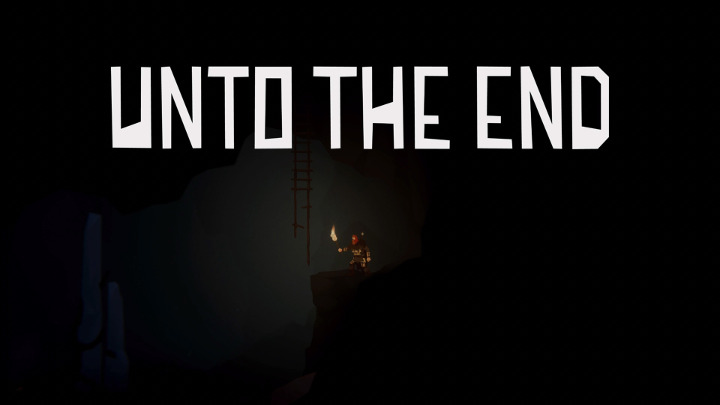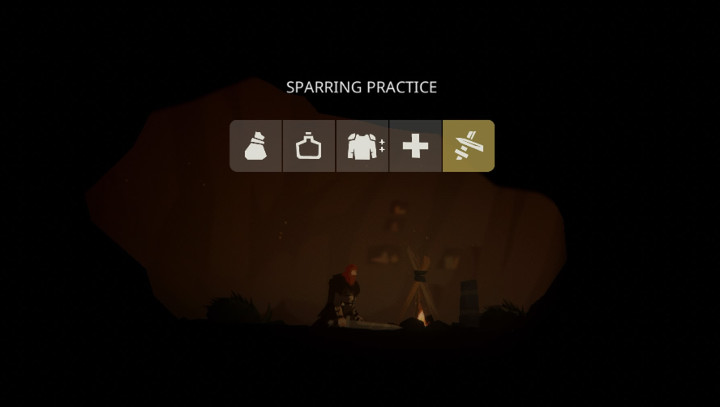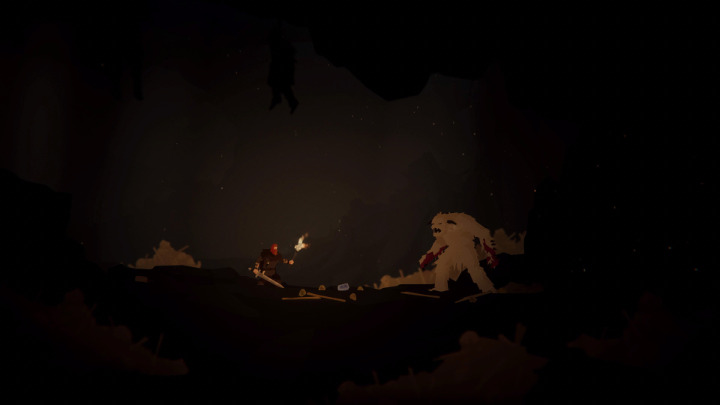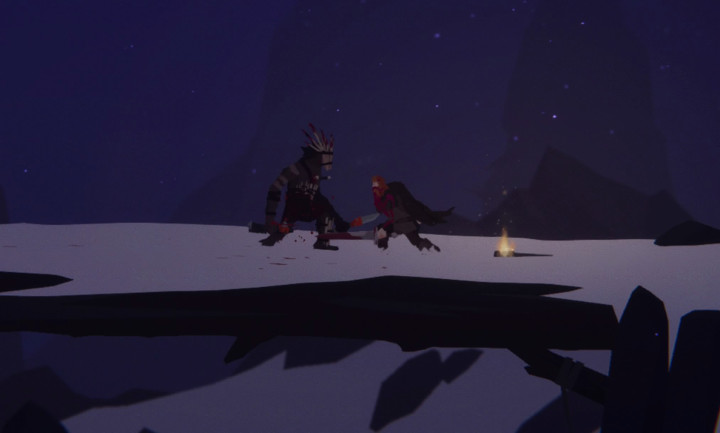
Toward the beginning of Unto the End, you’re greeted with the following message:

It’s tempting to write this off as a creative flourish, much like Resident Evil‘s classic “This game contains scenes of explicit violence and gore” line. This description sounds pretty gruesome, but if you’ve ever played the original Resident Evil, its “explicit violence and gore” almost comes off as comical. It’s hard to imagine anyone being disturbed by plastic-looking zombies and pixelated blood stains.
But when it comes to Unto the End, you should definitely heed the introductory warning: Combat in this game is really difficult to wrap your head around at first. This is, of course, largely due to the fact that the game’s combat system is incredibly rich and complex. I want to say it’s easy to pick up, difficult to master, but it really isn’t all that easy to pick up.
However, when you reach a campfire, you can select the option to do “Sparring Practice,” which brings you to a flashback-slash-combat-tutorial. I did this three times before I felt like I finally had a handle on using my sword, and even then I found myself getting brutally decimated by my foes more often than not.

The combat system is based around two main attacks: a high attack and a low attack. On top of this, there’s a high block and a low block. If your enemy attacks high, you should block high. If you want to follow that up with a counterattack, you’ll need to determine if this particular enemy is vulnerable to high or low attacks in that particular moment, then strike the opening.
And to add even more complexity on top of this, you also have a fake attack (high or low), which you can use to goad enemies into blocking one way so you can attack the opening this leaves.
All of this means that you’ll have to watch your enemies and interpret their movesets. Attacks will be signalled to you before any blow comes, but just about every enemy in the game has a unique set of tells that need to be watched, memorized, and reacted to. The fundamentals of combat quickly evolve into their own language, sometimes almost puzzle-like in the way it asks you to interpret the data each enemy is feeding you.
Failure is inevitable, though, and punishment is swift. You can drop your sword in combat if you take a particularly rough blow, which renders you helpless until you pick it back up. And if you take too much damage, you can start bleeding out — go too long without addressing this and you character will bleed to death.
Oh, and did I mention that most of this happens in the pitch dark, where you have nothing but the flicker of a dying torch to see by?

There are a lot of moving pieces to the machinery of combat here, and you’ll have to develop some muscle memory before any of it clicks into place. But once it does, every encounter feels like a puzzle box that slowly unfolds as you learn the enemy’s moveset and its counters. It’s ridiculously satisfying to finally master a fight that you’d failed at dozens of times.
But in all this, the introductory text rings true. “Reading, reacting, and staying calm are vital.” You need a clear head and a good sense of rhythm to feel out the pace of each encounter. If you start mashing buttons wildly, you’re going to start taking damage, then drop your sword, then ultimately get hacked apart. Frustration can quickly lead to the loss of combat rhythm, which causes your perfectly timed dance to collapse.
All of the most brutally, brick-wall-difficult sections of the game are combat sequences, where you’ll die over and over again until you ultimately unlock the secret to victory. This means that an overwhelming amount of your time in Unto the End will be spent failing in combat.

That makes it strange, then, to look back and realize how little of the game is actually combat-based. In a perfect, no-damage run, I expect that only about ten percent of your time would be spent in combat. The rest of the game plays out more like Limbo than anything else, with cinematic puzzle-platforming as you navigate your way through dark, cold caverns.
Even so, Unto the End‘s combat is the core of the experience. It would be an entirely different game without it, in the same way that Metal Gear Solid would be an entirely different games without its stealth gameplay mechanics (even with all of its convoluted, cinematic storytelling intact). And that combat is brutal, often infuriatingly so. I anticipate that a lot of people will pick this up and never finish it. In fact, at the time of this writing, I’m getting close to (what I assume is) the end, and I’m still not sure I’ll see this through to the end.
I adore the combat system in this game, and I’ve been consistently impressed by how much use 2 Ton Studios got out of it for Unto the End. It feels constantly surprising, graceful in its finest moments (though that gracefulness quickly turns to clunkiness the second you lose your cool). Building a combat system like this is a fine art, and I have to applaud 2 Ton for pulling it off. I’m just not sure I have what it takes to truly master it.